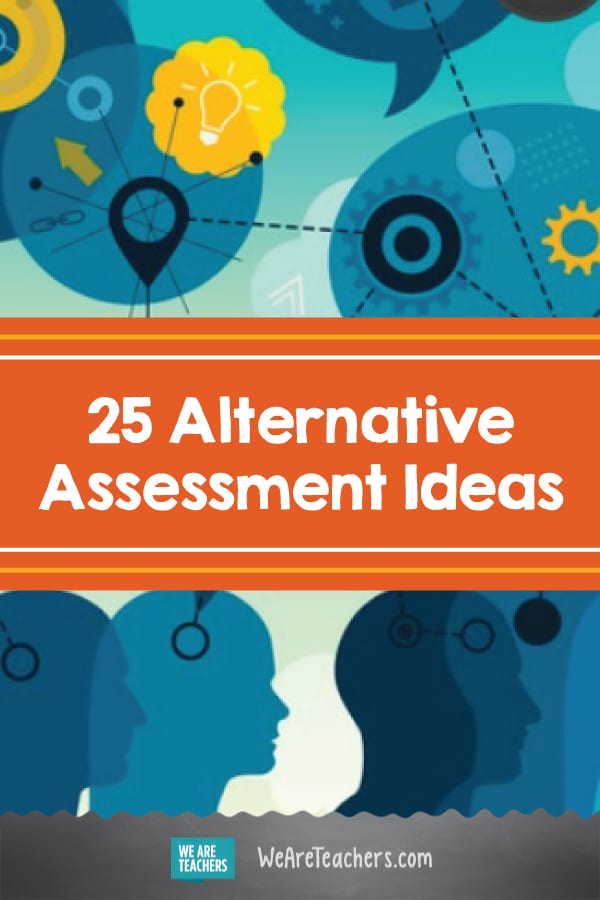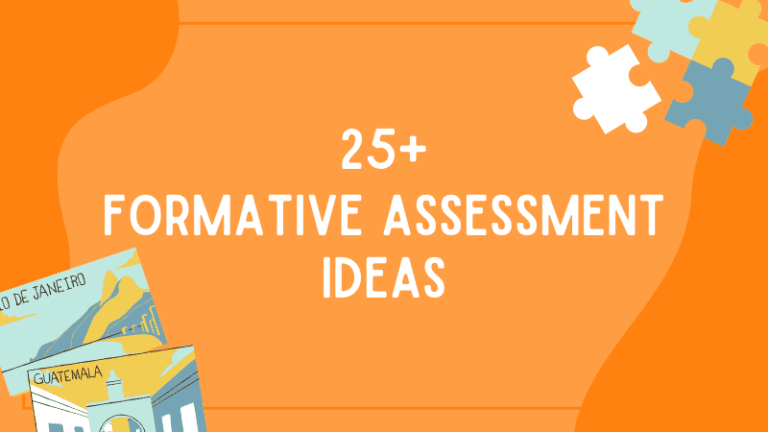Sometimes the best way to check for understanding is with a good old-fashioned paper-and-pencil test. But more often than not, there are assessments that are more fun and interesting, and just as effective, to give your students the opportunity to show what they know. Here are 25 alternative assessment ideas that will tap into students’ different learning styles and get you the information you need to make sure they’re learning.
1. Plot a family tree.
Highlight the relationships and connections between individuals by filling in a family tree. For example, have students plot out the relationships between characters in a story, the important players in a historical event, or the family lines of greek mythology.
2. Conduct an interview.
Instead of answering multiple-choice questions about a topic, why not tell the story through an eyewitness account? For example, if you are studying the Montgomery Bus Boycott, have students write an interview with Rosa Parks about what happened. Or better yet, have two students collaborate and then perform the interview together.
[contextly_auto_sidebar]
3. Create an infographic.
Explaining a concept through a visual representation definitely demonstrates that students have a clear understanding. Infographics take the most important information and present it in a clear, memorable way. Click here to check out examples from WeAreTeachers.
4. Write a how-to manual.
They say that teaching someone else about a concept requires a greater degree of understanding. With this in mind, have students write a short manual explaining a process or concept, step by step. For example, how to annotate a short story, how to conduct an experiment, or how to solve a math problem.
5. Take a virtual shopping trip.
Test your students’ proficiency of adding and subtracting money with a practical application. For example, give each student an imaginary budget of $100 to spend on back-to-school supplies. Provide them with sales flyers and have them write up what they will fill their cart with. Make sure to tell them they must spend as much as possible and give them a range of items to buy, for example 15–25 items.
6. Use two modalities.
Let younger students explain a concept in two ways—with words and a picture. Have students fold a piece of paper in half and draw a picture on top and explain the concept in words on the bottom of the page. For example, have them explain and illustrate the life cycle of a butterfly.
7. Make an ABC book.
This is a fun way for students to show what they know in a creative way. Have students create a mini book with an illustrated cover and write one letter of the alphabet on each page. They will record one fact on the topic per letter/page. A few potential ideas: animal study, biography study, math vocabulary words.
8. Fashion a mobile.
Instead of writing a boring essay, have students showcase their knowledge in a three-dimensional way. Different facts about the topic are written on separate cards, attached to yarn, and hung from a plastic hanger. For example, a story map (setting, characters, conflict); parts of speech (nouns, verbs, adjectives); science concepts (the phases of the moon); math concepts (shapes and angles).
9. Create a pamphlet.
Students demonstrate everything they know about a topic with a colorful pamphlet that includes facts and illustrations. Possible topics: an animal study, branches of government, or an author study.
10. Present opposite points of view.
Have students demonstrate that they fully understand the main arguments for and against a modern issue, such as what restrictions, if any, should be placed on stem cell research or whether athletes should be allowed to use performance-enhancing drugs. Ask them to present facts and statistics that support both sides.
11. Work on a STEM challenge.
Consider assigning projects that challenge students to use every step of the engineering process, such as the egg dropchallenge or cardboard boat racing. (Note: mini versions of cardboard boats can be raced in plastic pools.)
12. Write a persuasive letter.
Students have to fully understand the merits of a position before they can persuade someone to adopt that same point of view. One way to demonstrate this is by writing a persuasive letter. For example, write a letter to the school board explaining why mandatory recycling and composting in every school would help the environment.
13. Create a concept map.
A concept map visually represents relationships between concepts and ideas. Test students’ understanding by having them fill in a prepared concept map or create one from scratch. Simple versions created by hand can do the trick, or go high tech with Lucidchart, an add-on for Google Docs.
14. Create a budget.
Have students demonstrate their proficiency with percentages by drawing up an imaginary budget. For example, let them choose their starting income and provide them with a list of expenses they must account for. Once they balance their budget, challenge them to figure out what percentage each category takes up.
15. Put out a WANTED poster.
Create an old-fashioned wanted poster for a character from a story or a historical figure. Have students describe the character using facts, figures, and a description.
16. Produce a multimedia, interactive poster.
The fun, low-cost, high-tech tool Glogster allows students to combine images, graphics, audio, video, and text on one digital canvas in order to demonstrate their understanding of concepts and ideas.
17. Create an artifact.
Turn your classroom into a museum and have your students create artifacts that demonstrate their knowledge. For example, types of indigenous dwellings, devices that use a spring, or models of a part of the body.
18. Coordinate a living history museum.
Make characters from history come alive. Students can dress like heroes, inventors, authors, etc. and prepare mini biographies. Invite guests to come in and learn from students.
19. Design a travel brochure.
Great for a geography study. For example, a state brochure could include maps, the state flower, flag, motto, and more.
20. Draw a comic strip.
Allow students to tap into their inner cartoonist and test their knowledge with comic strips. Set clear expectations for length and content beforehand. Possible uses: book reports, retelling of a historical event, or science concepts, like the water cycle.
21. Create a collage.
Using old magazines, let students create a collage of images that demonstrates their understanding of a concept. For example, math concepts, like equalities, balanced equations, and volume; science concepts, like weather, life cycles, and chemical reactions; and English concepts, like word roots, conjugations, and punctuation.
22. Dramatize.
Have students write a play or monologue that was inspired by a moment in history, summarizes a story, or explains a concept.
23. Write a pitch.
Have students write a pitch for a Netflix series starring characters from an important moment or period of time (the American Revolution, the Civil Rights era) or follows the theme of a book. Encourage students to be inspired by subplots or to tell the story from a different character’s point of view.
24. Gather real-world examples.
Ask students to demonstrate their understanding by gathering evidence of concepts in everyday life. For example, geometry (angles, shapes), grammar (sentence structure, use of punctuation), science (condensation, refraction), or social studies (maps, current events).
25. Dream up a board game.
At the end of a unit, allow students to team up and create a board game as a culminating project. For example, at the end of an economics unit, have them create a game about supply and demand or a game about wants and needs.
Do you have more alternative assessment ideas that you use in your classroom? Come and share in our WeAreTeachers HELPLINE group on Facebook.
Also, check out 5 Unconventional Final Exams to Give Your Students.


